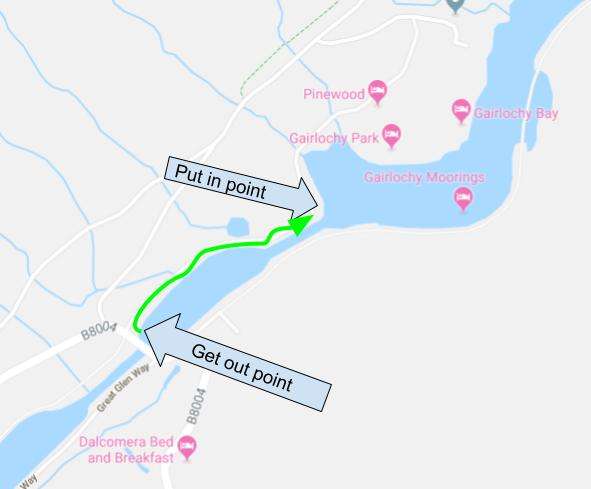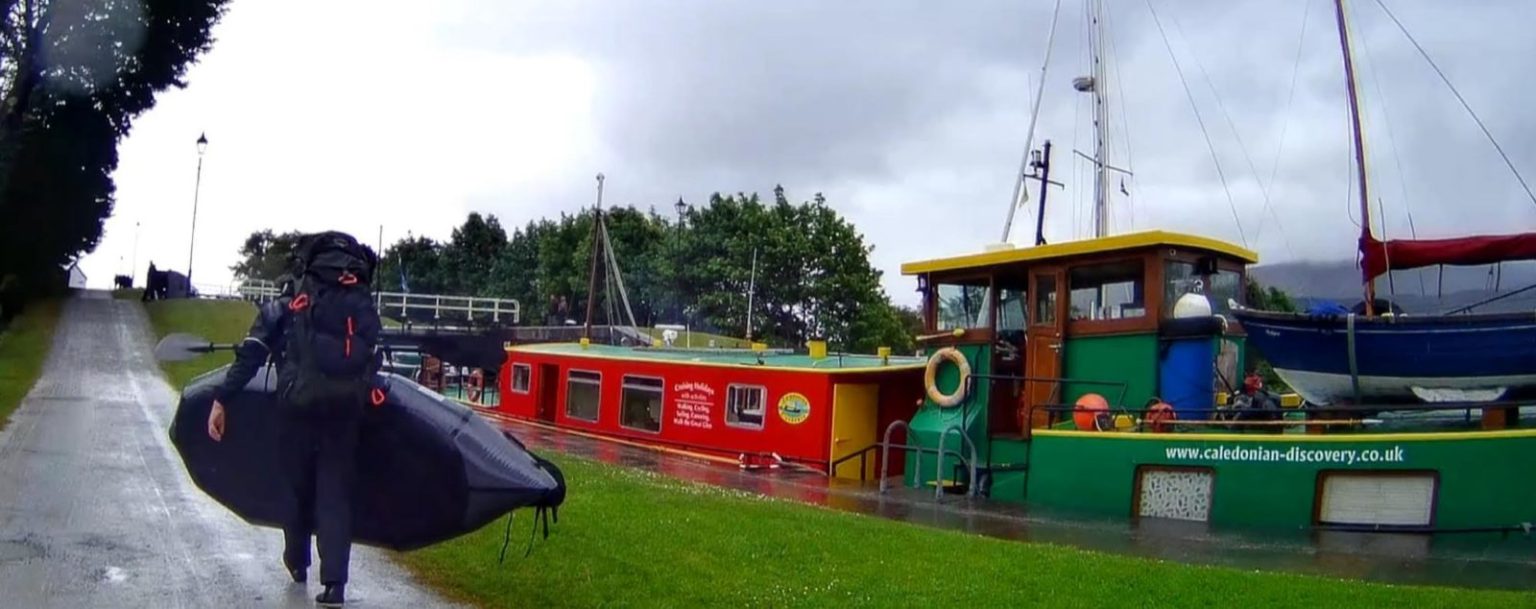We had a late start on day 1, largely due to a killer hangover from partying too much in Fort William the day before, and so we only set off paddling from Neptune’s Staircase at about 11:30 am.
After unloading all our gear from the car-park at Banavie on the Northern Western side of the Canal, we slowly set about pumping up our boats and performing last minute gear checks. While we had a backup vehicle available in an emergency, we were determined to complete the route unassisted, so we made sure that we have everything we needed and that all our gear was fully watertight.
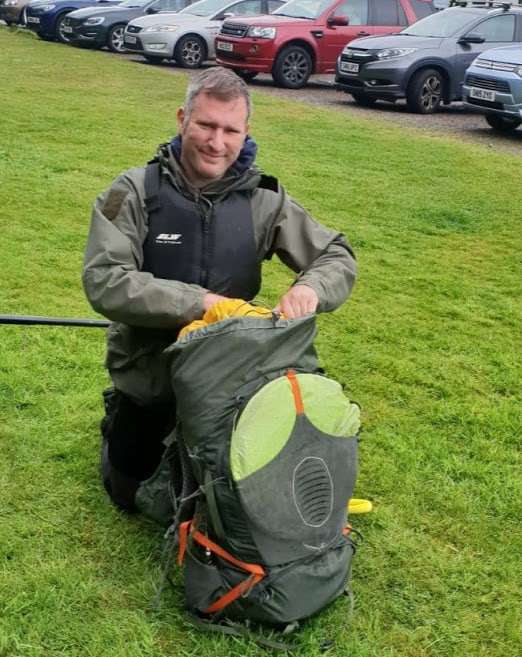
Next to us a father-daughter team were doing the same, they also have an inflatable boat but it wasn’t a packraft – it was a far heavier (16kg+) Advanced Elements inflatable canoe – far more stable, with better tracking, but not carryable over any kind of distance.
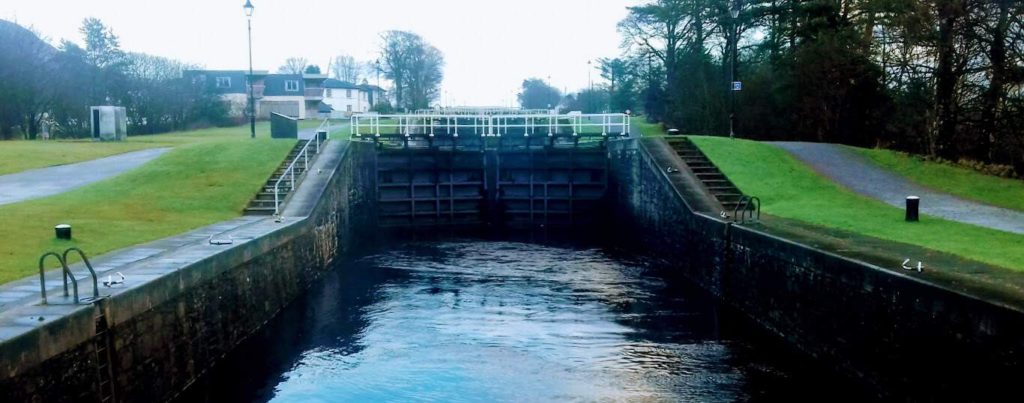
Neptune’s staircase is an impressive feat of engineering, as a series of locks that raise boats 20 metres up from sea level in Loch Linnie, onto the first 10km stretch of the Caledonian canal.
The journey usually takes boats 90 minutes from start to finish, but as we were carrying our pack-rafts on our shoulders it took a mere 5 minutes of huffing and puffing to portage up to our first paddling point, about 20 metres beyond the top lock.
We set about putting our boats into the water, next to a youth group that were on an organised canoe tour. The group had hard open top canoes that were clearly faster than our own boats so we knew would have little chance keeping up with them on the canal.
By now the wind had picked up and the rain had set in (for the day!), but it made little difference as we were out on the water anyhow, protected by our army surplus Goretex jackets. The wind was blowing was gusting from the south west, which turned out perfect for us. Even without our little round sails raised(they aren’t allowed on the canal sections) we were given a 2-3km per hour speed boost!
Over the next 2 hours we made steady progress along the first canal section of the route. The were few boats travelling along this section and generally were on our own, with the exception of the occasional Canadian canoe groups who passed us with ease.
By mid afternoon the winds had dropped and we paddle the final 2kms unaided. We reached the second portage of the trip at Gairlochy, where the canal connected with our first loch of the trip Loch Lochy.
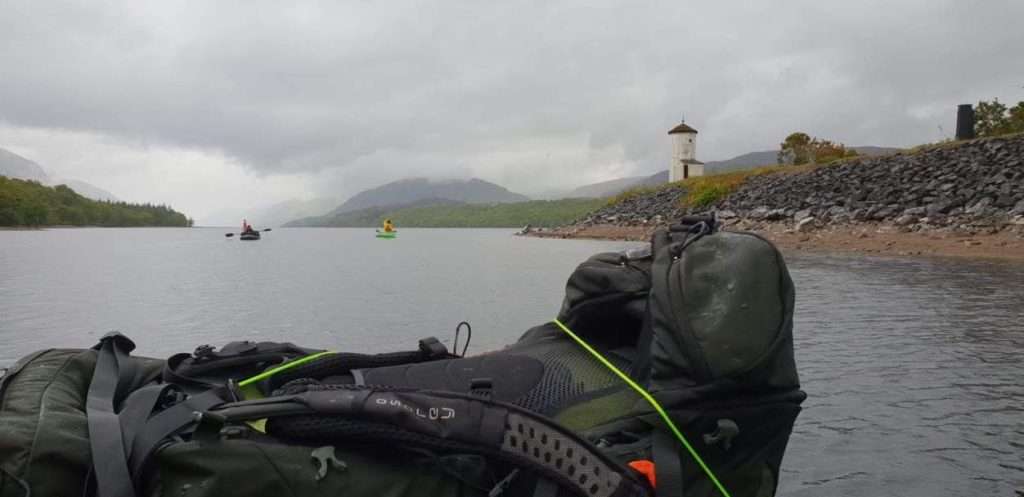
The loch was dead calm as we rounded the corner above the canal and caught sight of the small lighthouse which marked the start of the loch.
Given the favourable wind conditions we were more than eager to test out our canoe sails – small round sails that attach to the front of the canoe. The sails offer the opportunity to take a rest from rowing when a good tail wind (8mph+) is blowing and you can also travel crosswind if you use your oar as a makeshift rudder / keel whilst sailing, something I had practiced with limited success a couple of weeks earlier on Thirlmere.
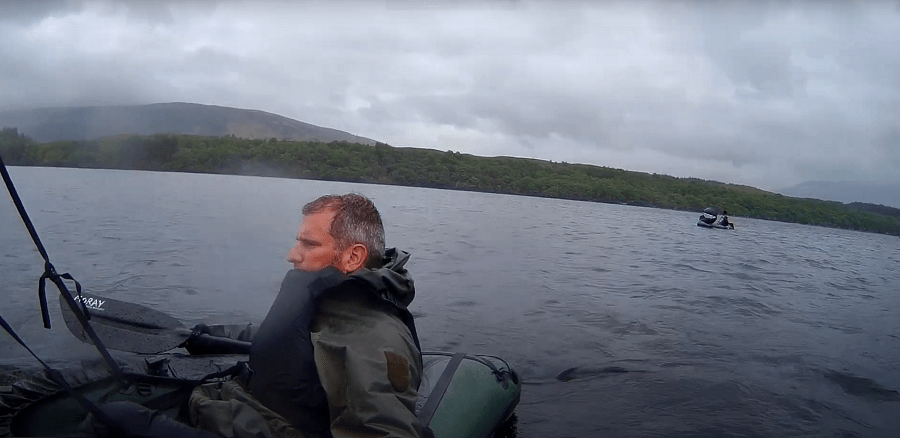
We had decided earlier in the day to travel up the northern edge of the loch, as it seemed that there would be more opportunity for wild camping. This did however present us with our first difficult decision of the trip – whether to follow the coast round a large bay that opened up about 1 km along the lake, or whether to cut across the lake, saving us about a half a mile of extra rowing.
Mark was eager to make progress and rightly pointed out that the conditions were ideal for the journey. I had some reservations about the hop. The wind had shifted slightly and was now blowing straight from the west, meaning if we capsized we would be blown out into the middle of the loch rather than over to the other side of the bay.
After some head scratching we agreed to risk it and we set off, sails raised into the bay. As we headed into the bay the wind rose steadily and soon we were making excellent progress, 500 metres out from shore, with spirits high. The winds continued to rise however, and within a few short minutes we were firmly in the grip of a brutal squall.
The winds whipped up the waves and soon my boat was being tossed around violently in the swell. I tried to drop the sail and paddle my way towards the shoreline but it soon became clear that I would exhaust myself or capsize long before I reached shore. The side wind was tossing water onto my bow, threatening to swamp the boat every time a wave crossed the boat.
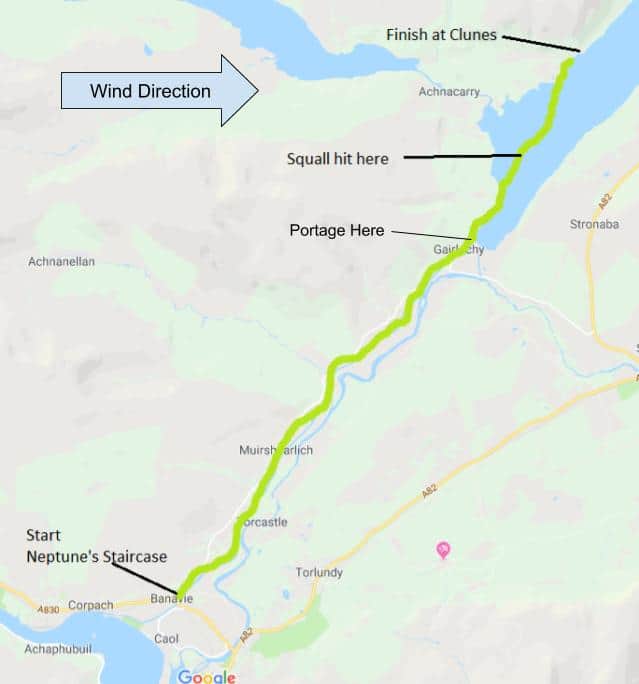
Mark had been blown too far ahead to be of any assistance if I did capsize and my wet suit would only offer token protection against the icy cold water – if I went in I was in real trouble.
Given the seriousness of the situation I decided that the only sensible course of action was to scream random obscenities and at the wind and get very angry with myself for choosing such a stupid course of action. I looked ahead and saw that Mark was still rowing against the wind, making little if any progress.
My only hope was to ride the storm and sail across the bay as planned. I hoisted the sail back up, which was instantly whipped towards the bow, somehow resisting efforts to snap the straps that we holding it vertical. If took out my oar and dug it into the water – partly to steer and partly to reduce the leeward drag that was pushed the raft towards the wrong shore.
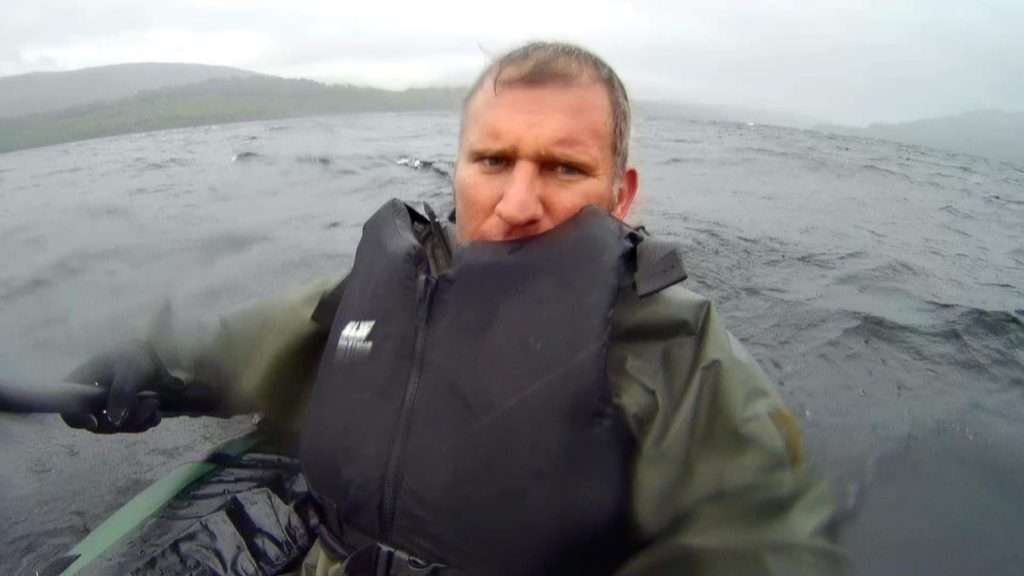
The gusting gales still tossed the boat around but now I had a modicum of control – each time a large wave approached I could steer the stern of the boat to face it, minimising water ingress and reducing the possibility of capsizing. In the troughs between the waves I turned the bow to face the shore, allowing slow but steady progress.
For a long long time it seemed like my sailing tactic was a mistake, but gradually the shore grew larger in my view to the front. Dread and panic, slowly shifting to confidence and elation, fuelled by the adrenaline pumping through my system. I then realised that I had completely forgotten about Mark – I turned to see that he too hard chosen to sail through the maelstrom and was also approaching shore in parallel with me.
We crashed onto the beach, dragged our boats up out of the water and collapsed into a heap next to each other, both with shocked smiles on our faces. We had made it! Needless to say we had learned from experience and wouldn’t be taking the same chances again!
Our original plan was to continue along the loch for 3 more kilometres, but we quickly decided that we’d had enough of rowing for the day so we pitched up on the beach right where we were, using rocks to weigh down the pegs and guys.
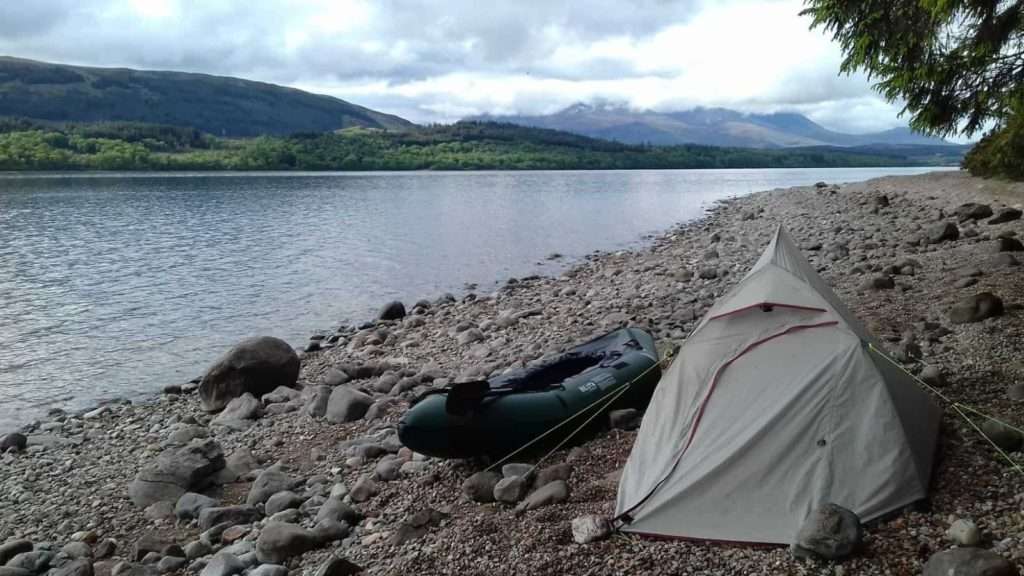
The journey continues on day 2
Information
Neptune’s Staircase / Banavie Put In Point
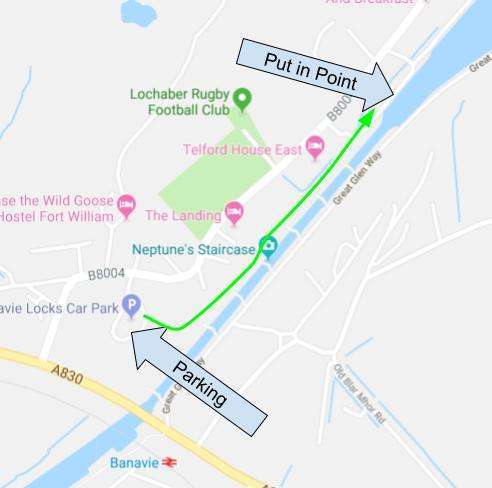
Gairlochy Portage Point
